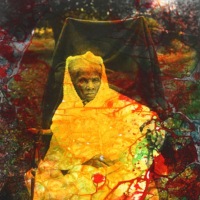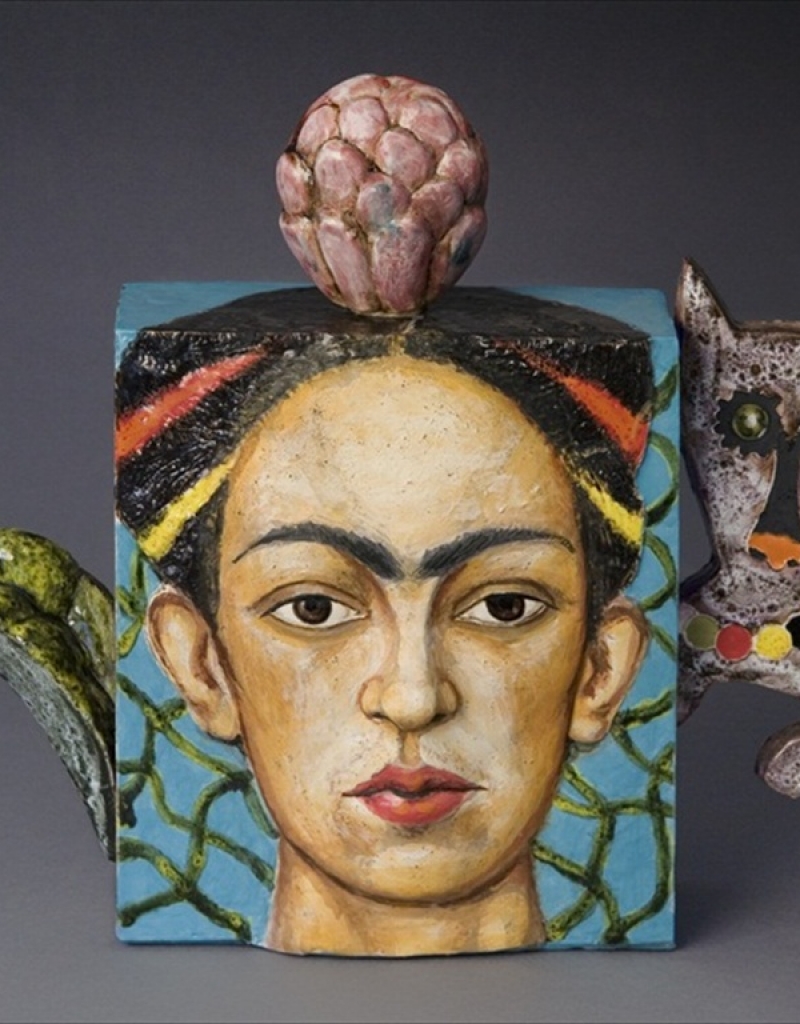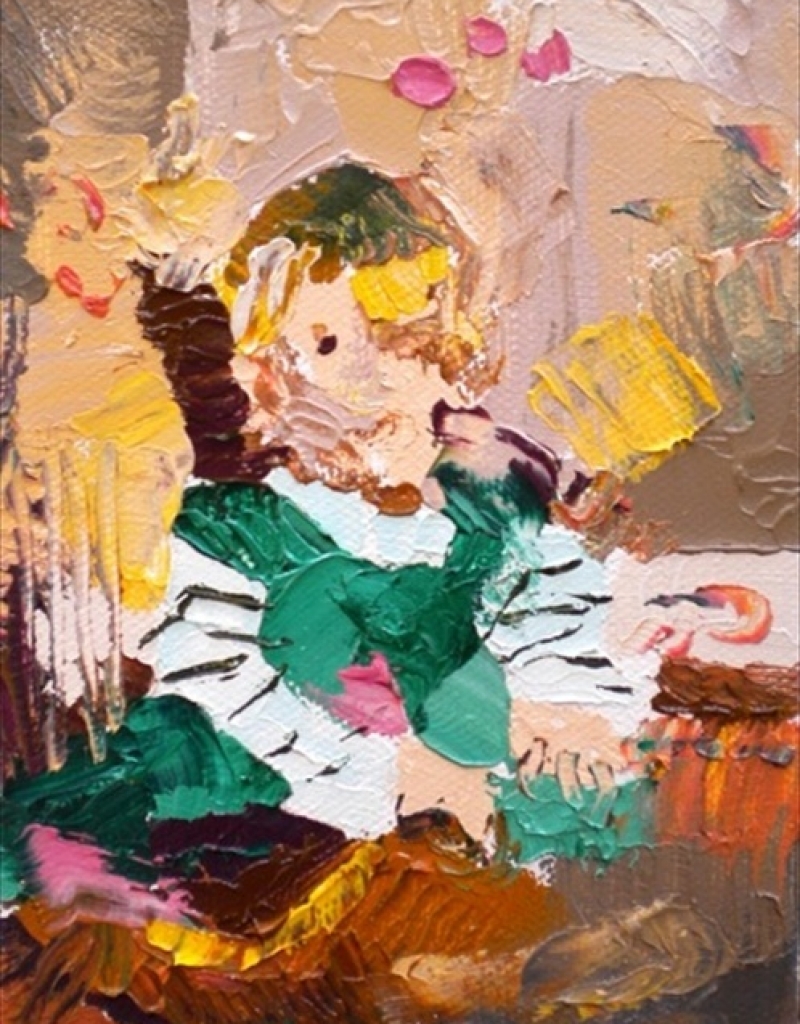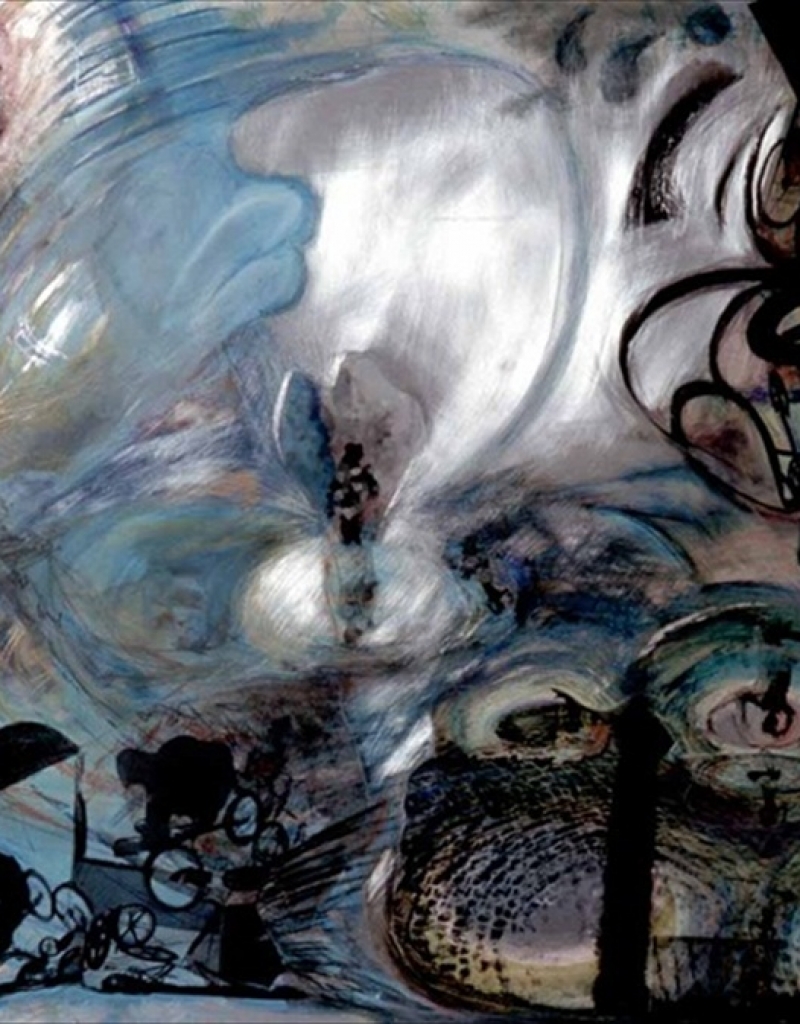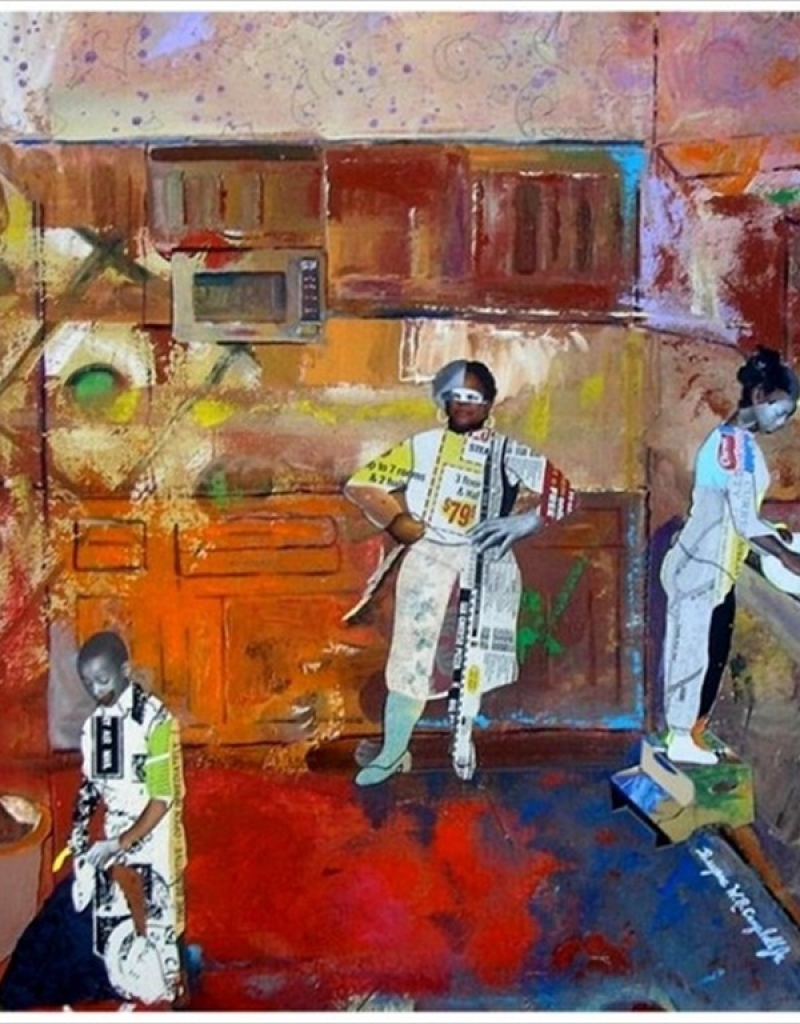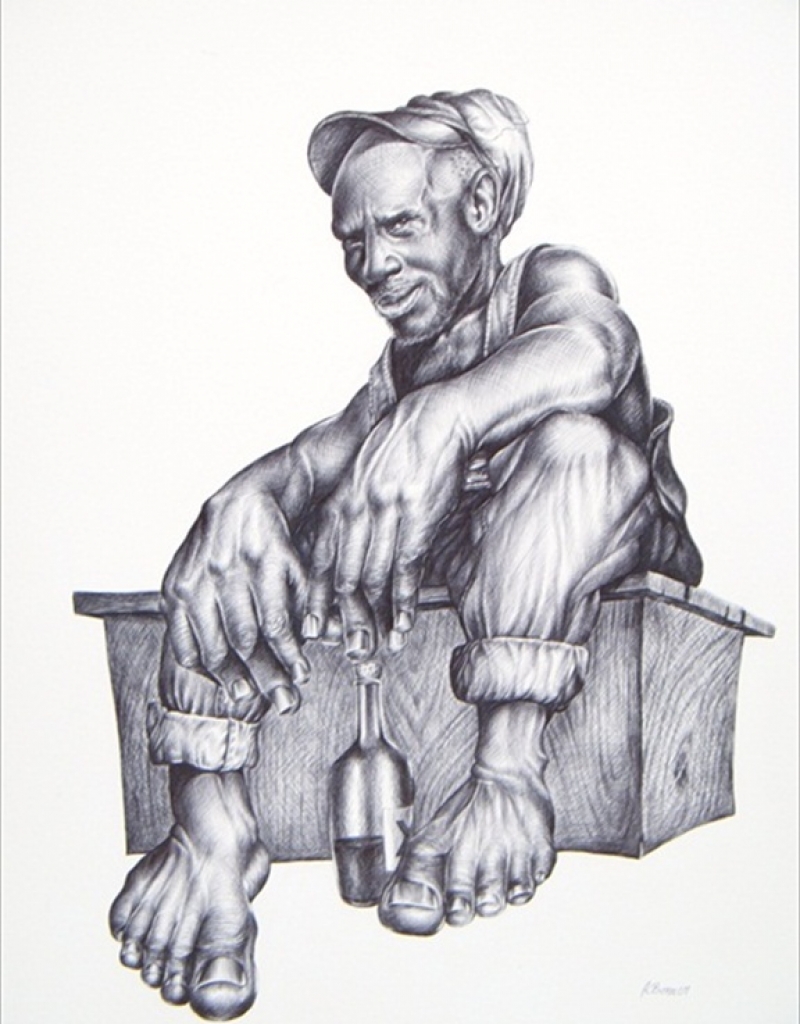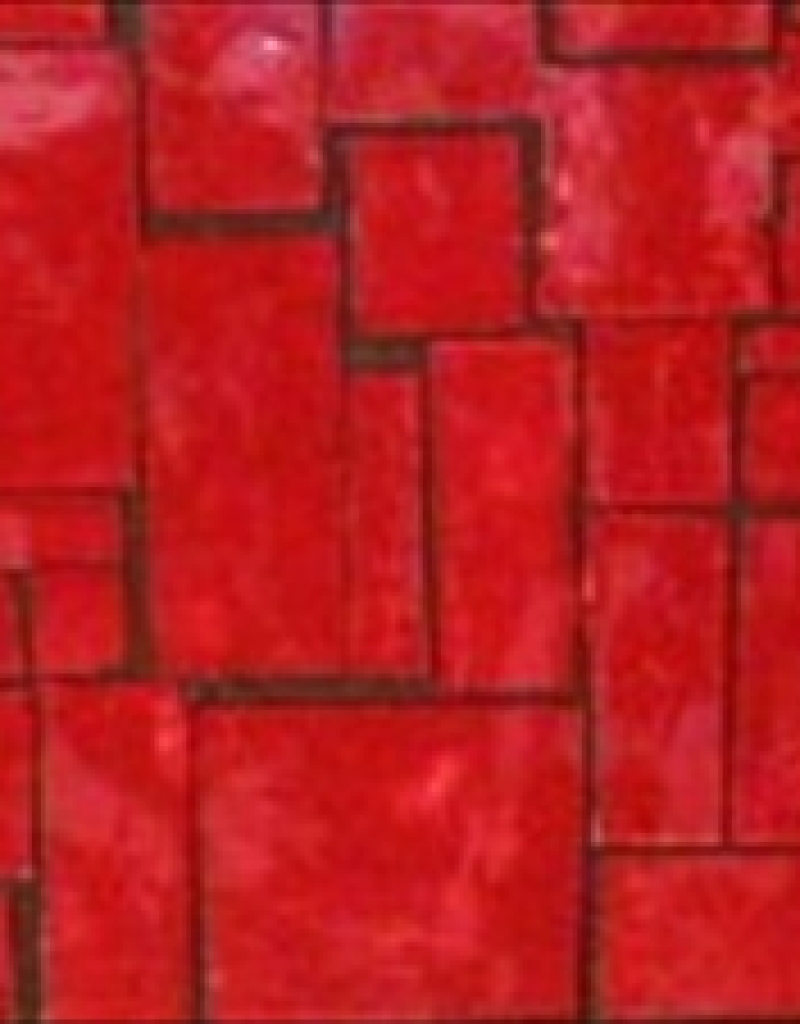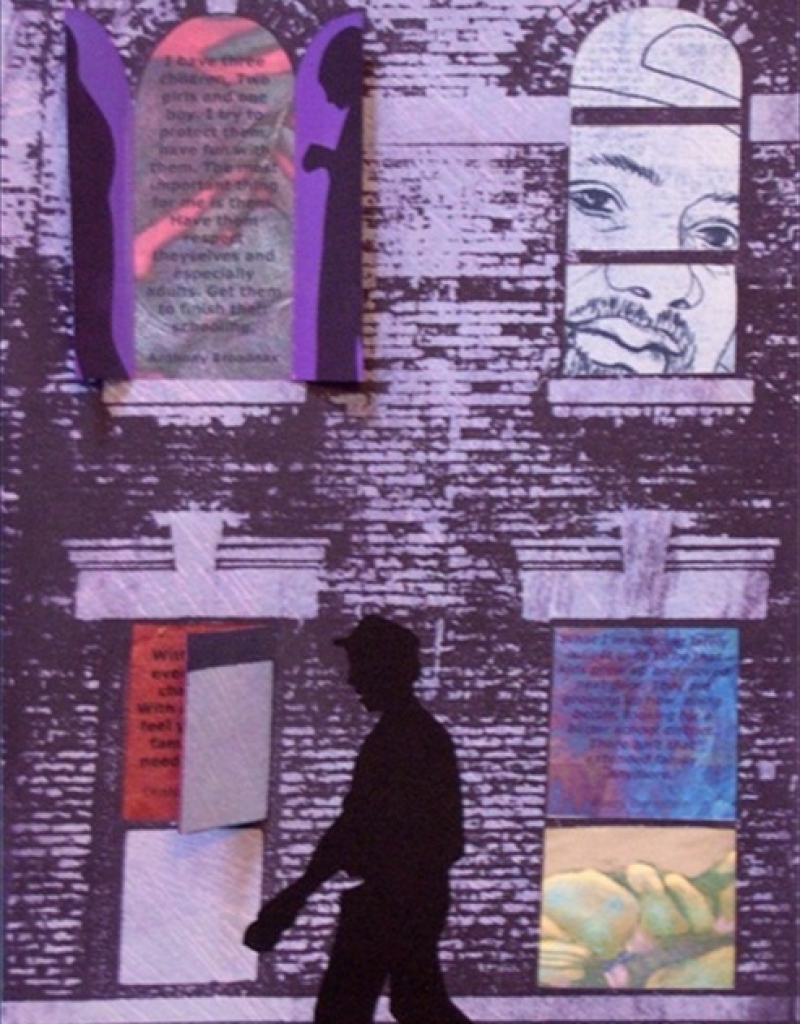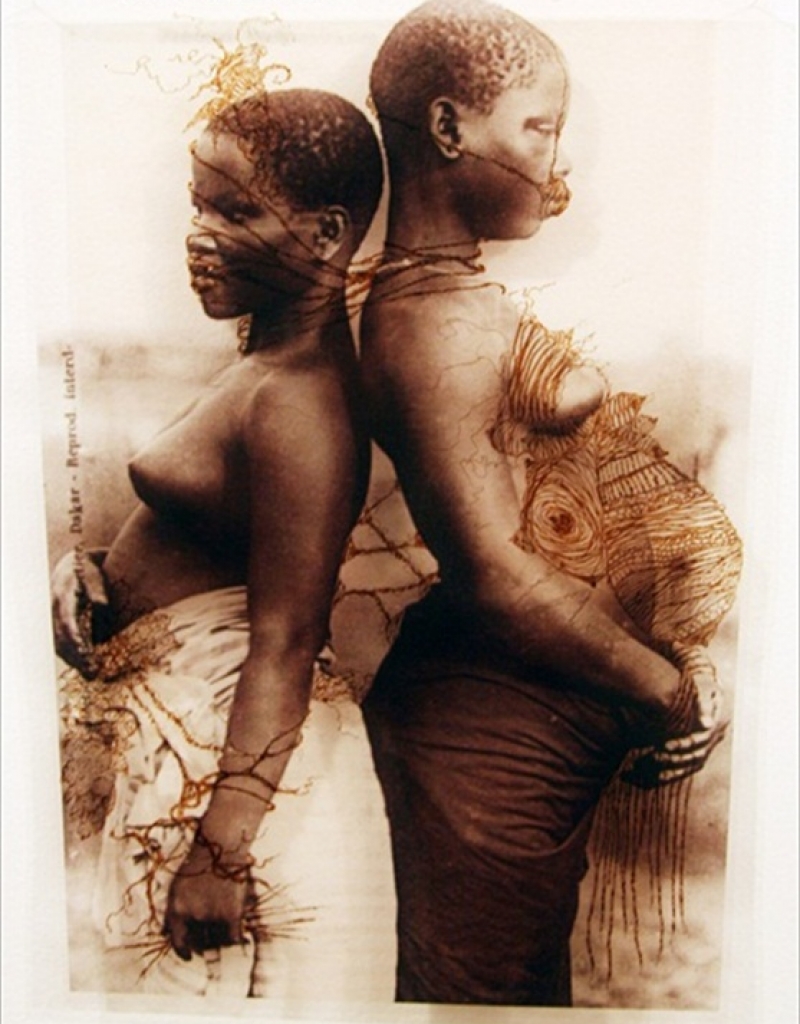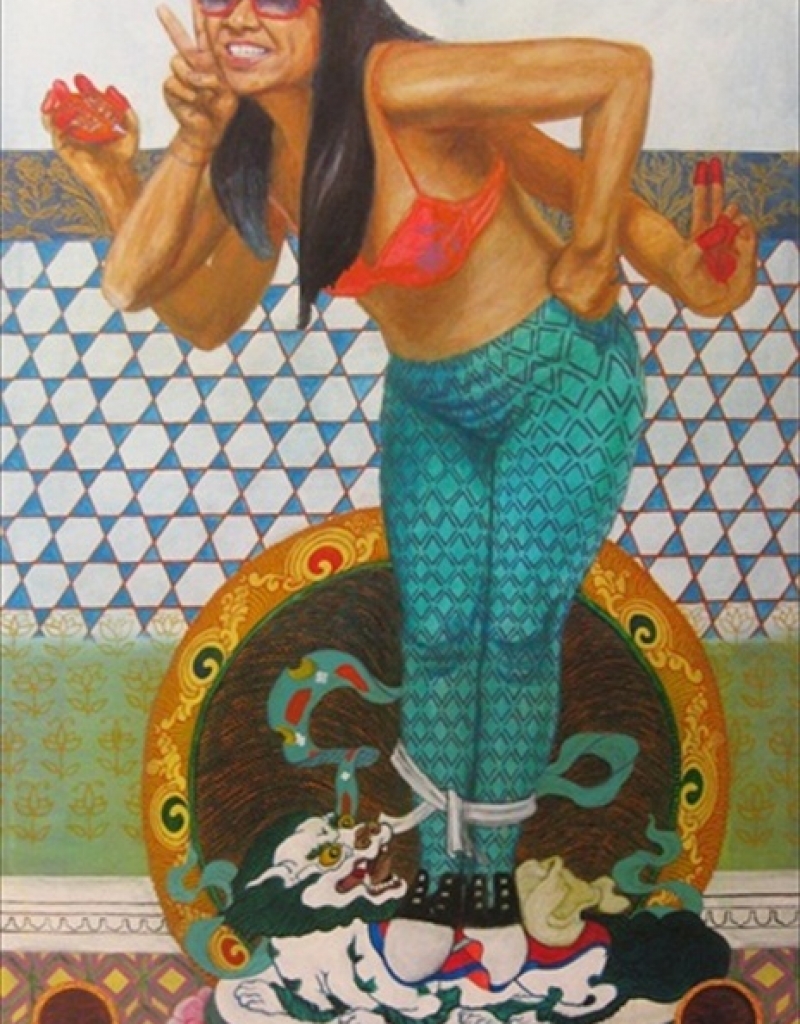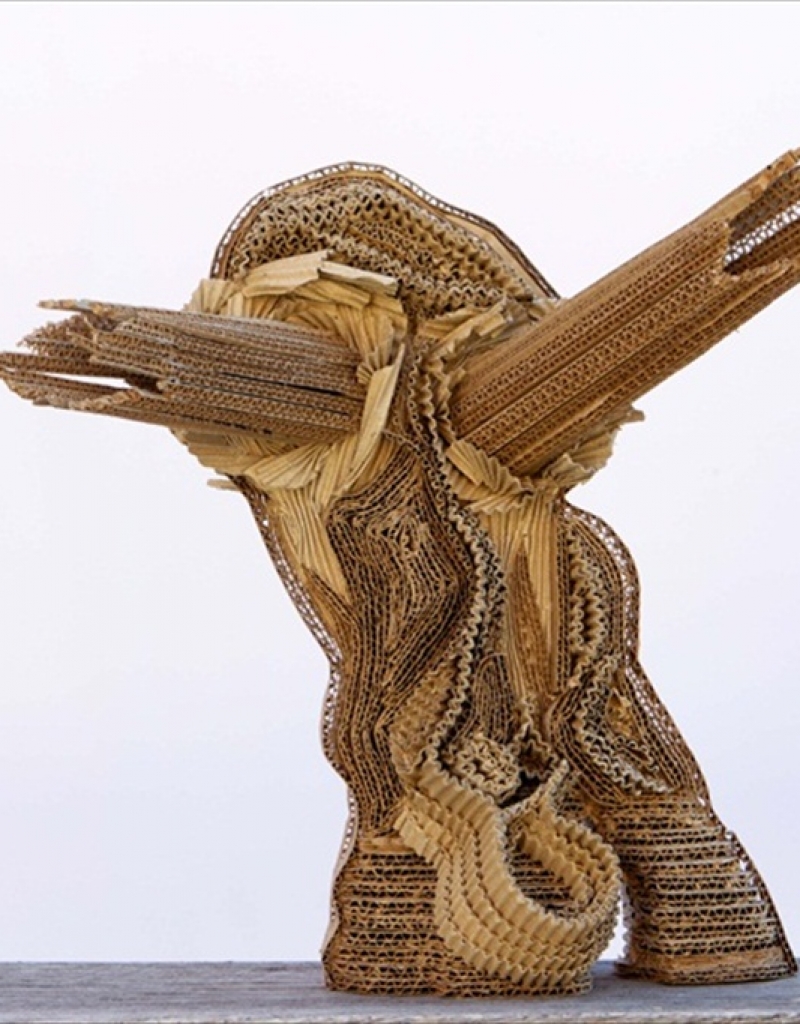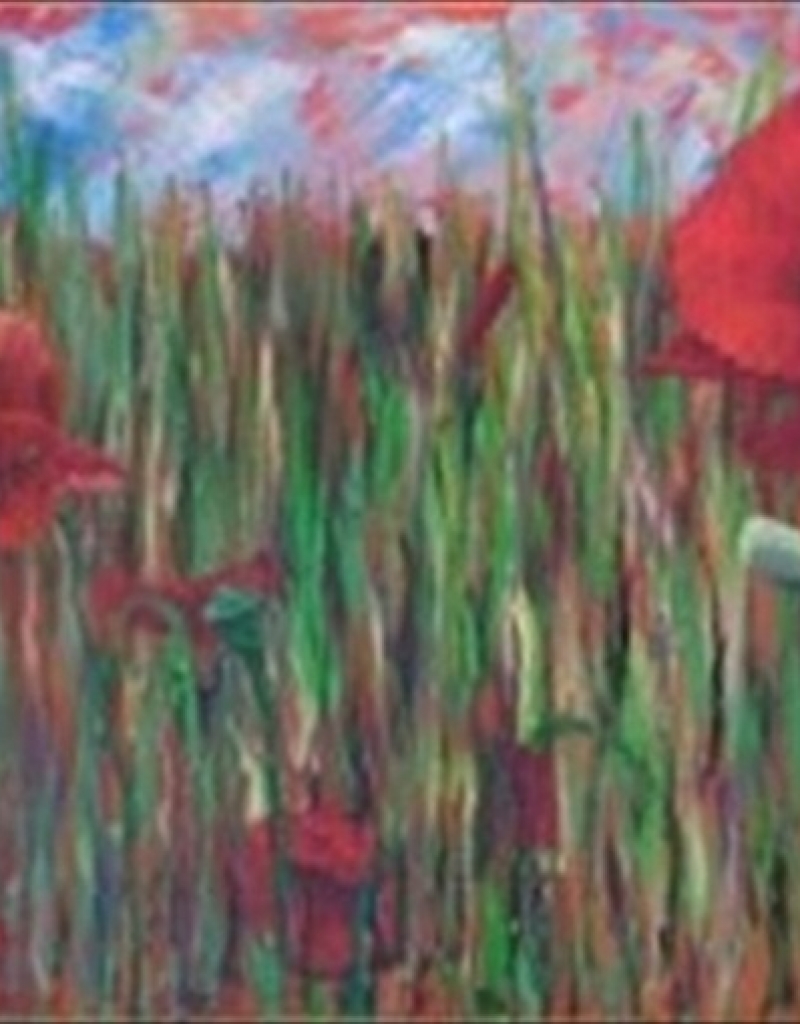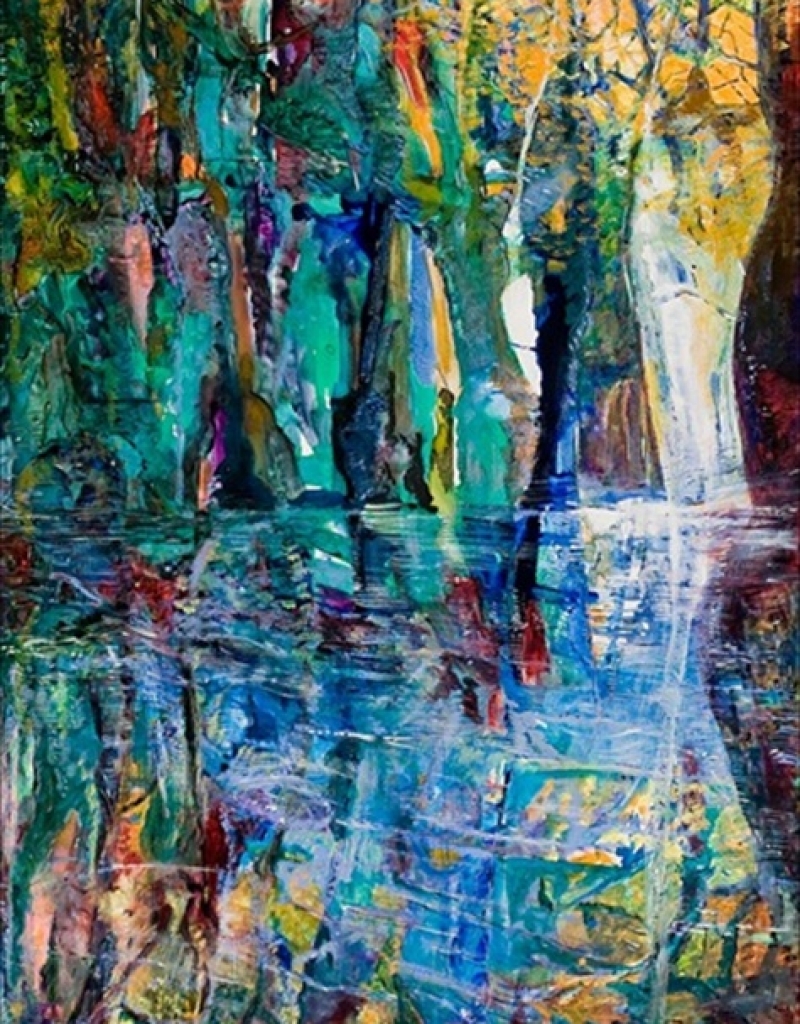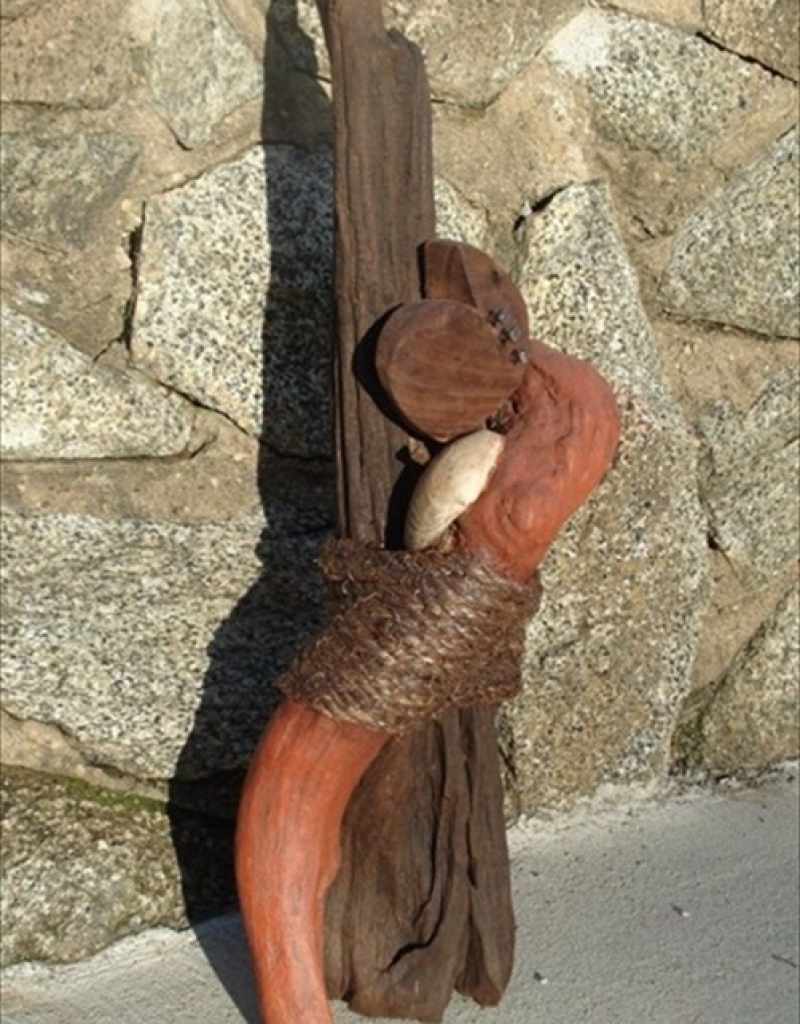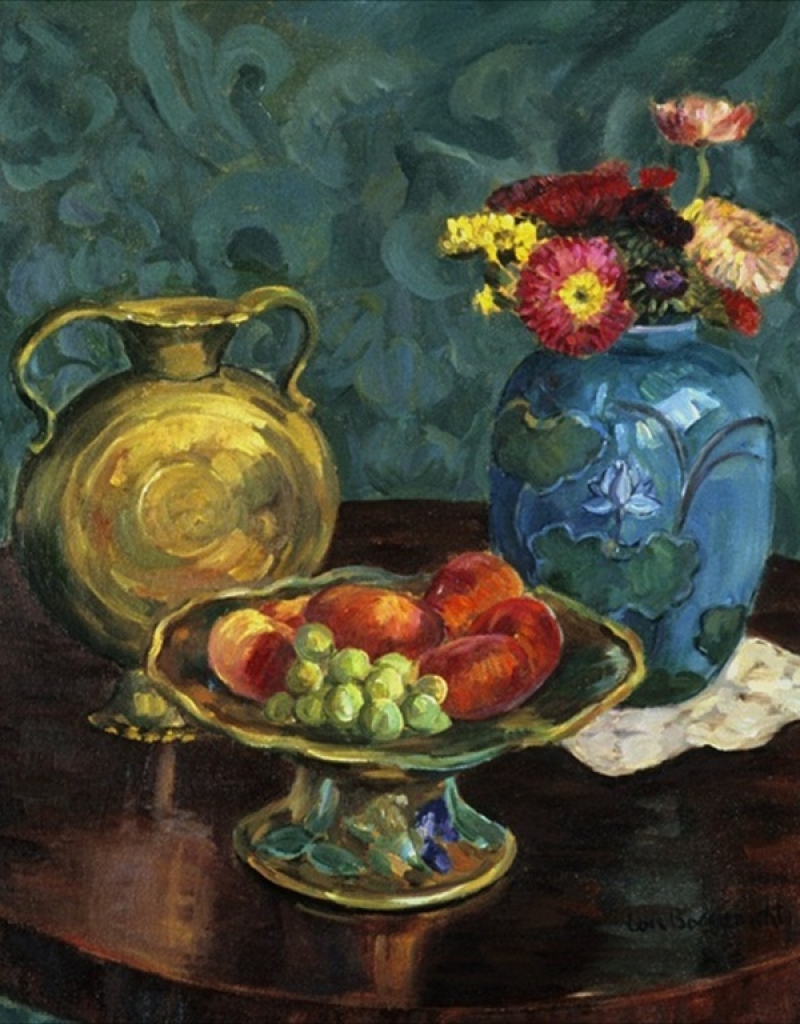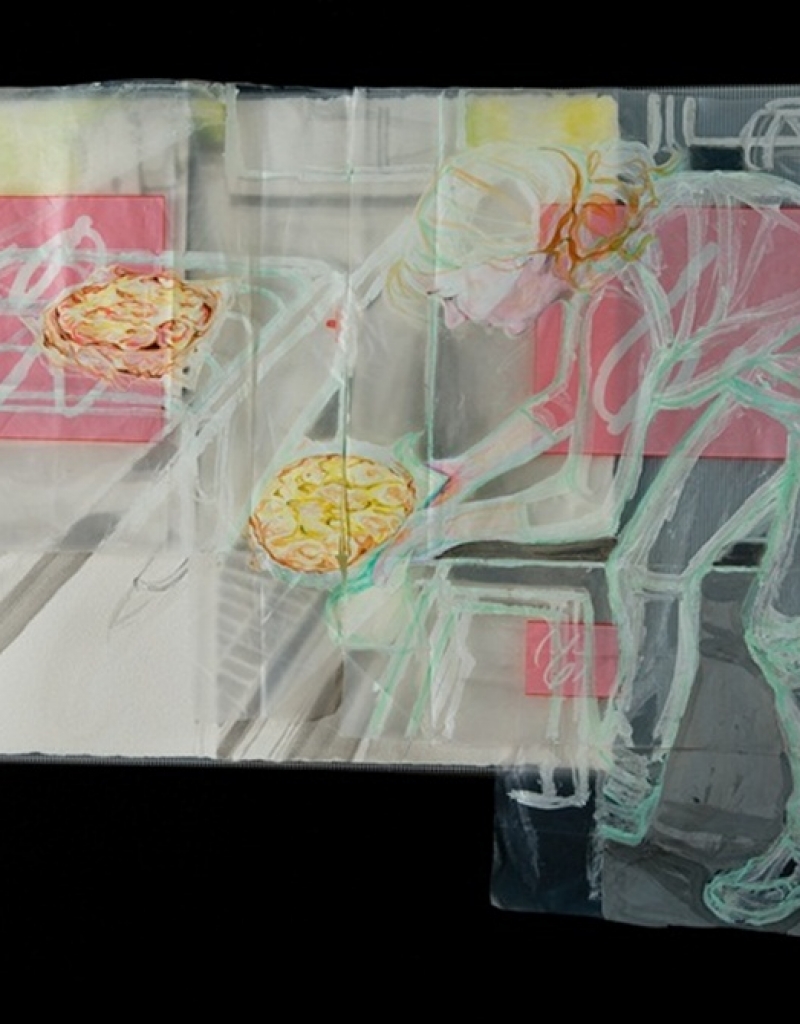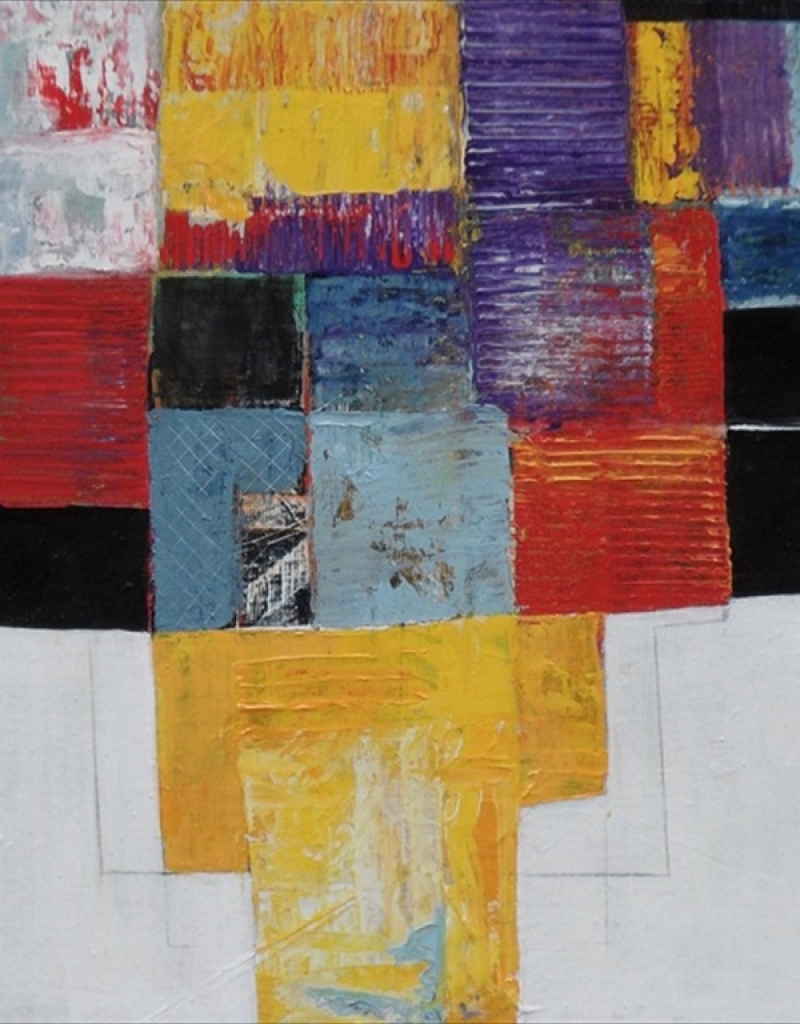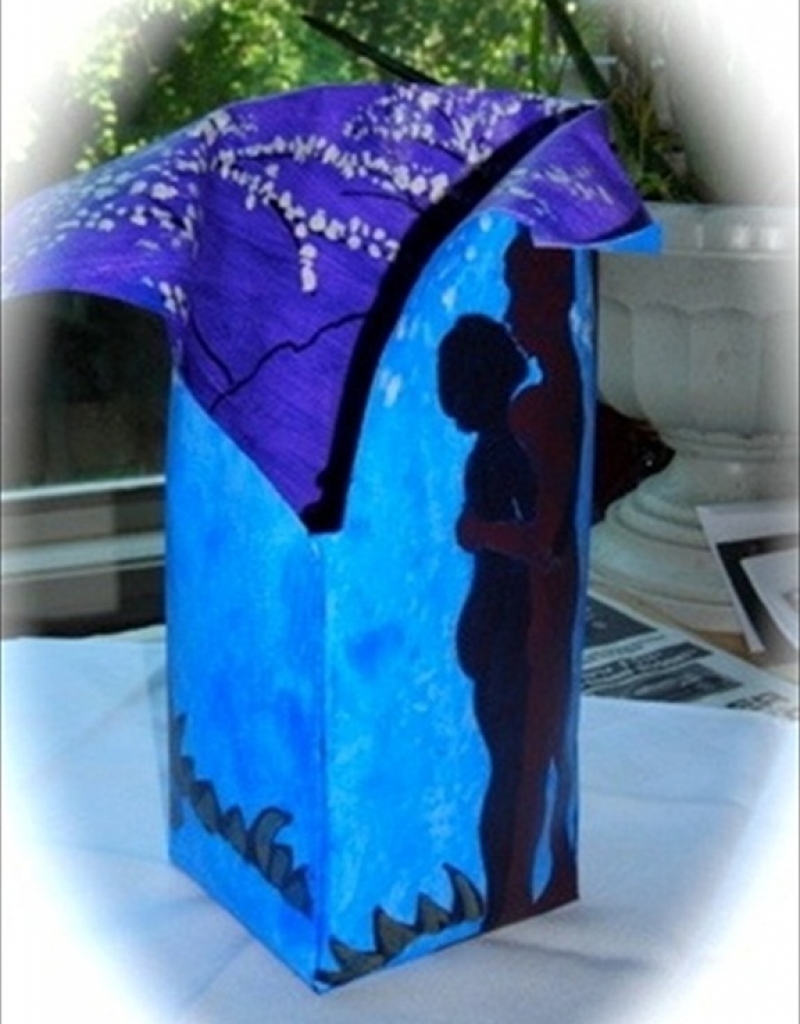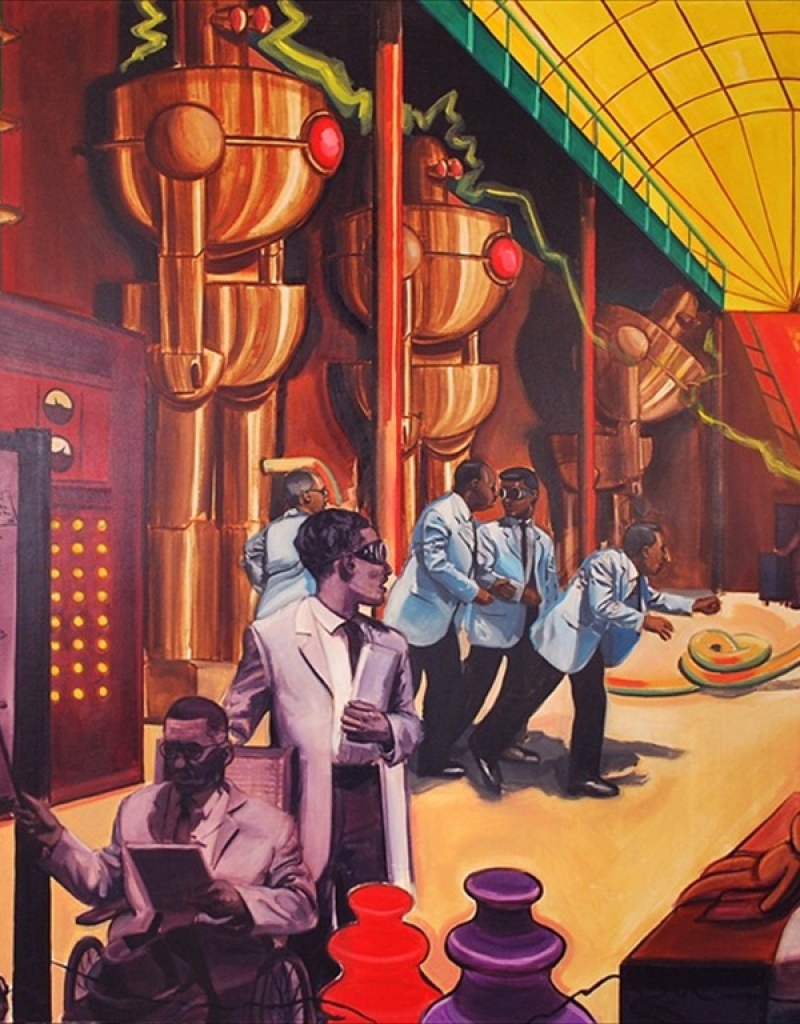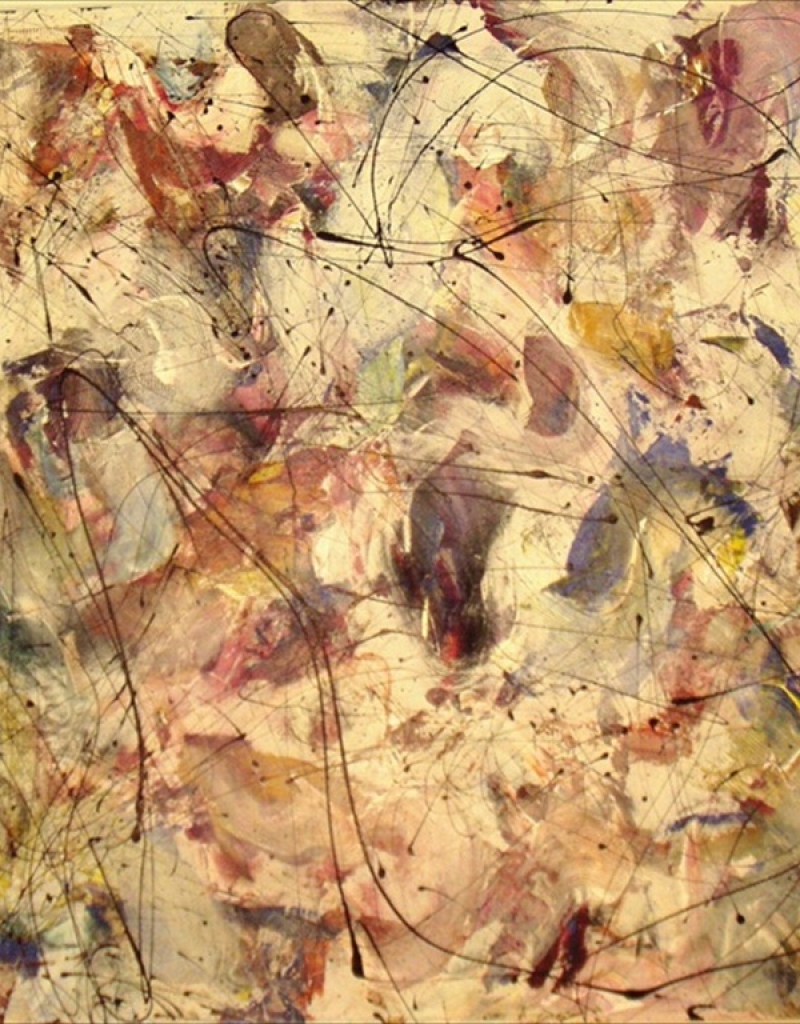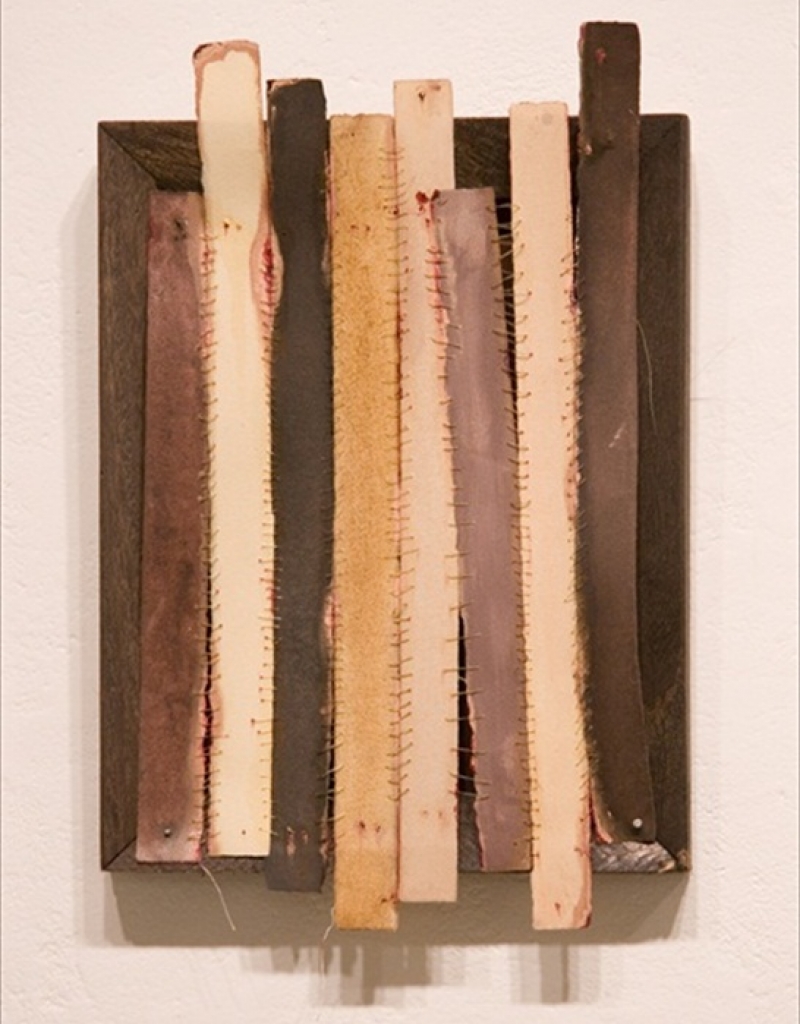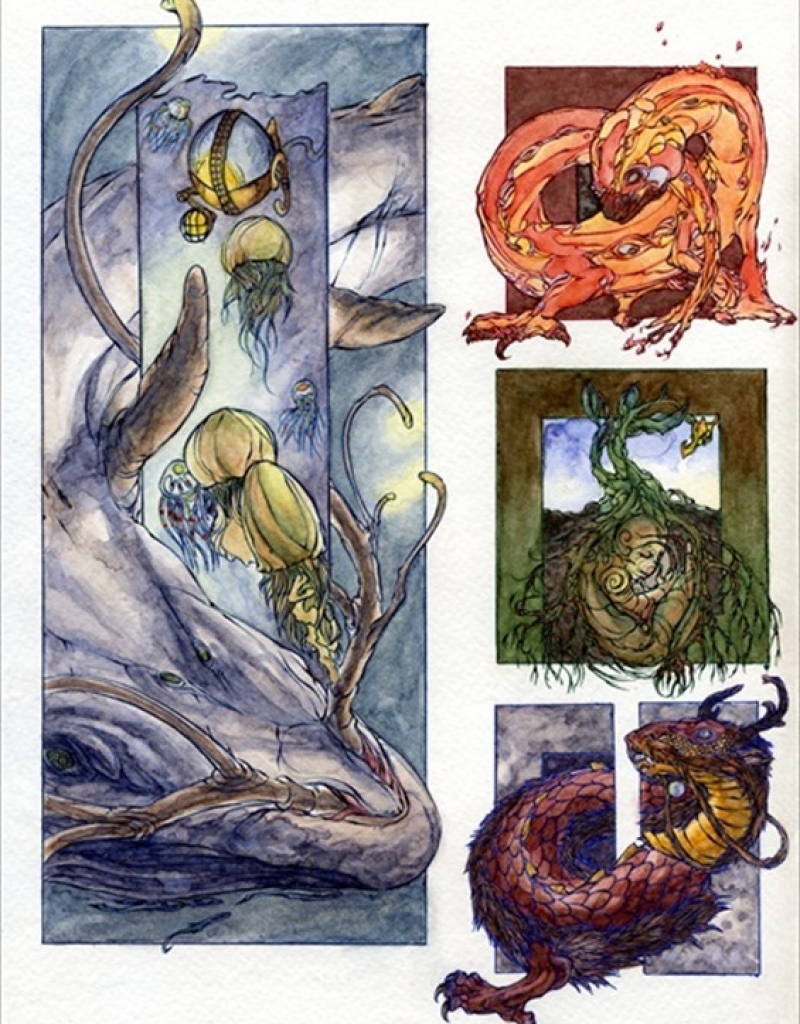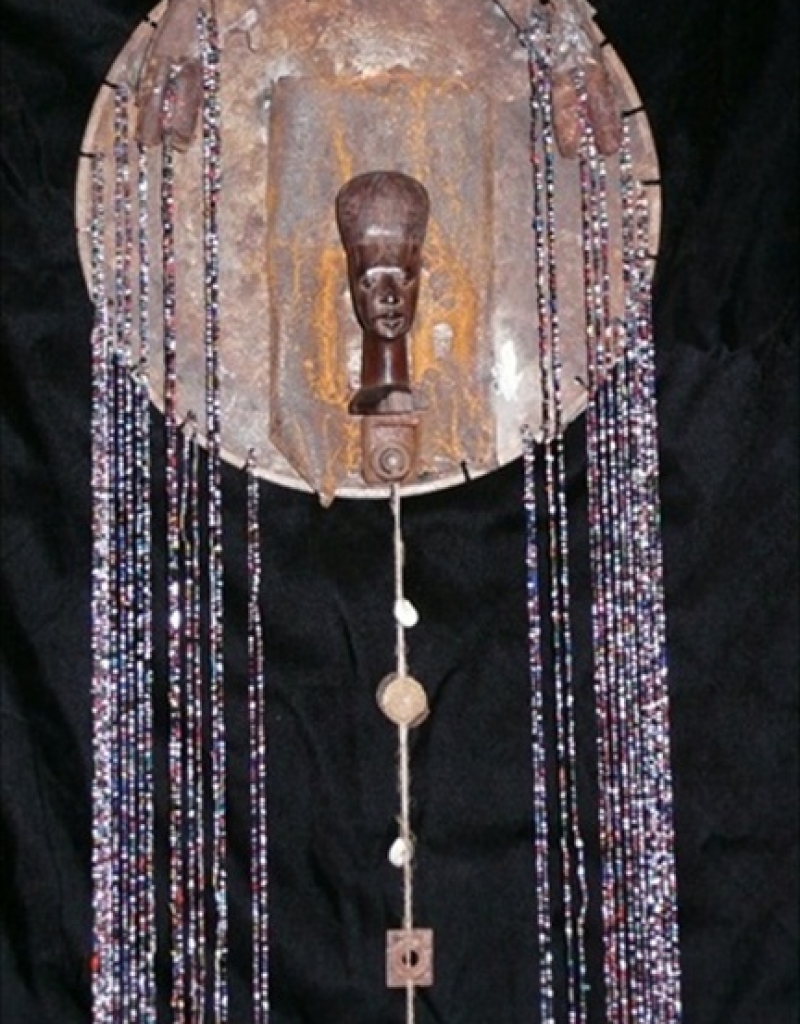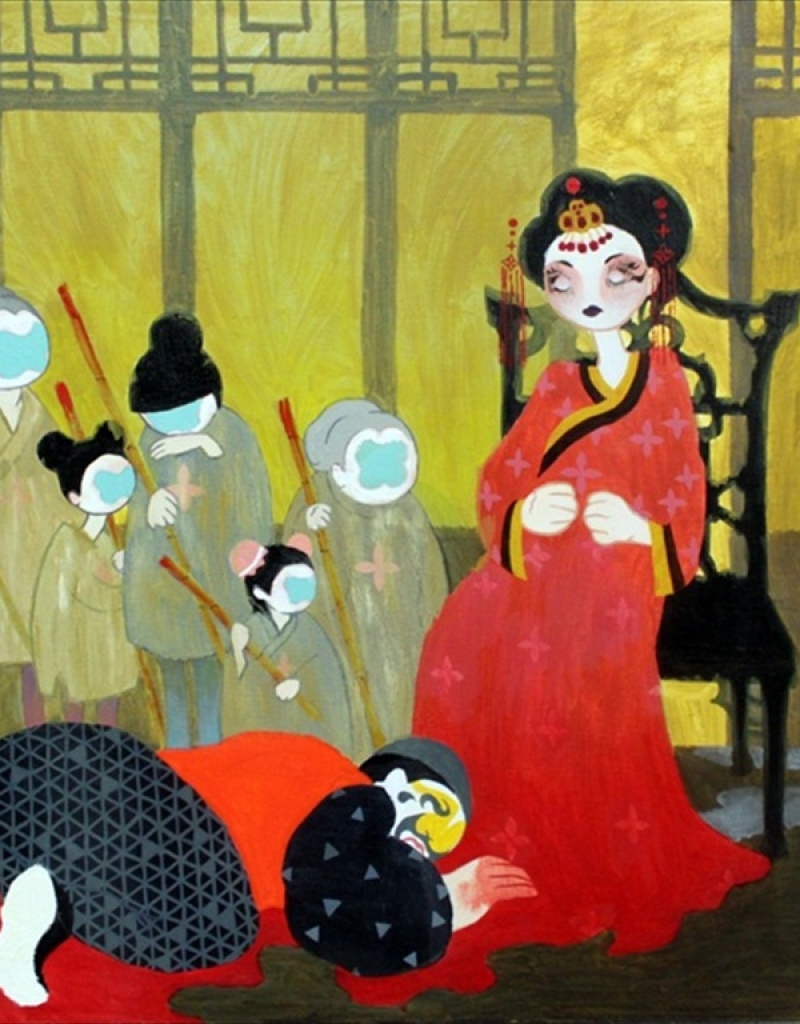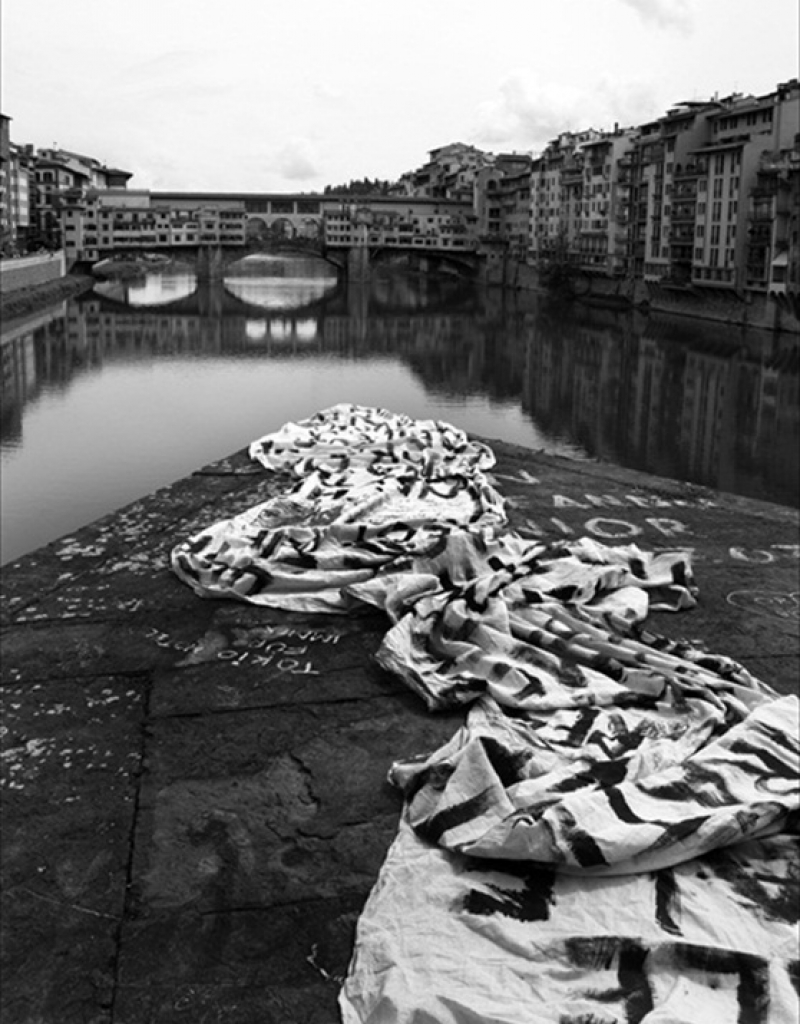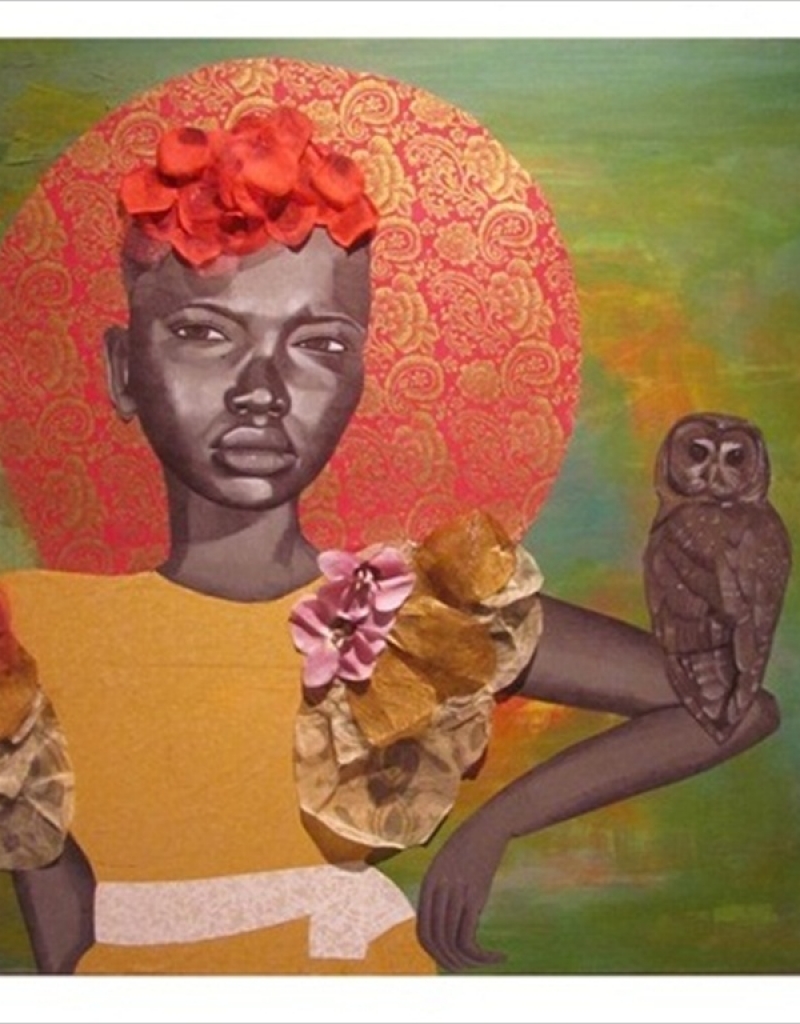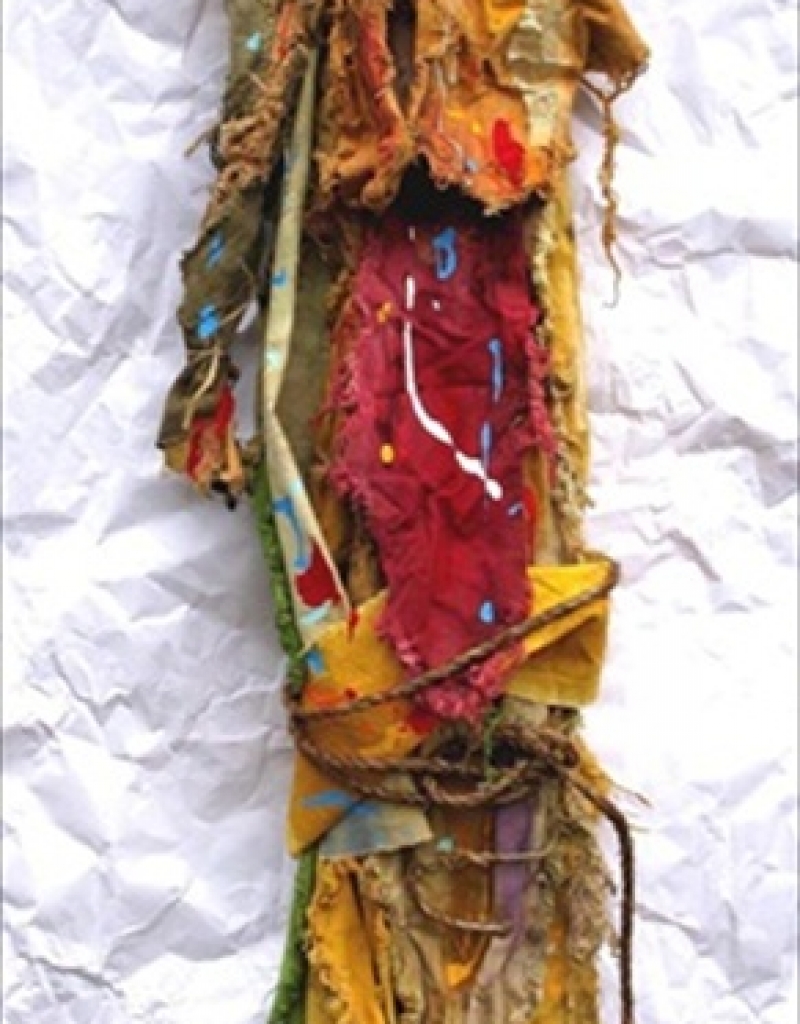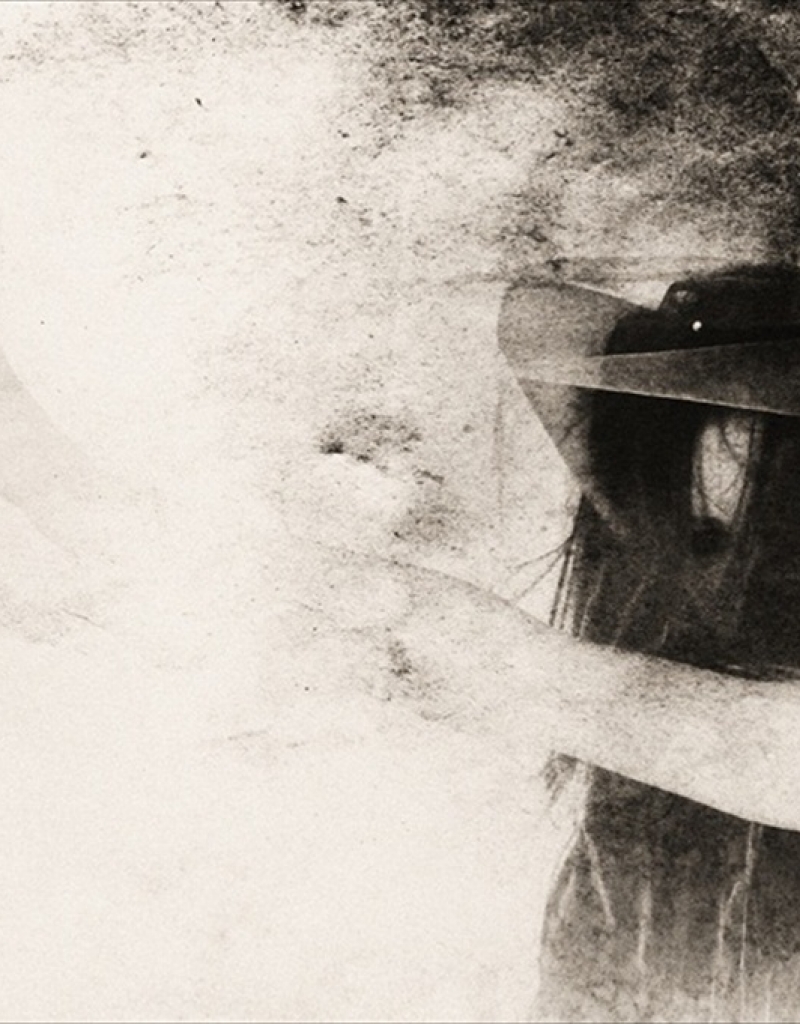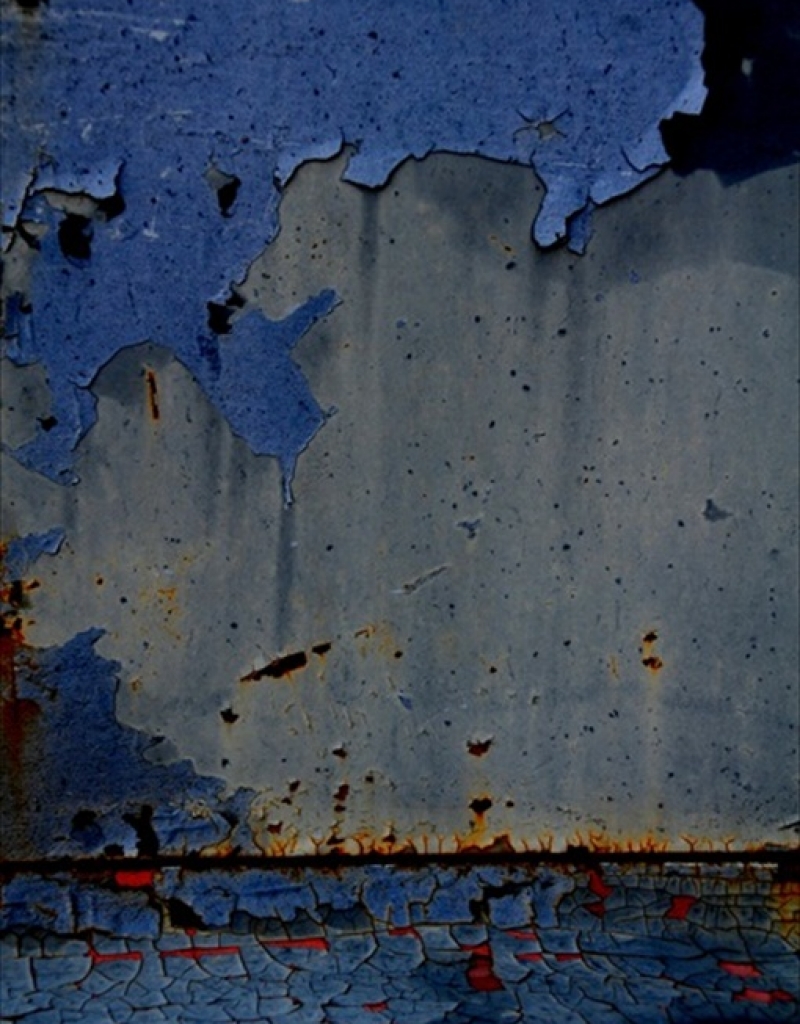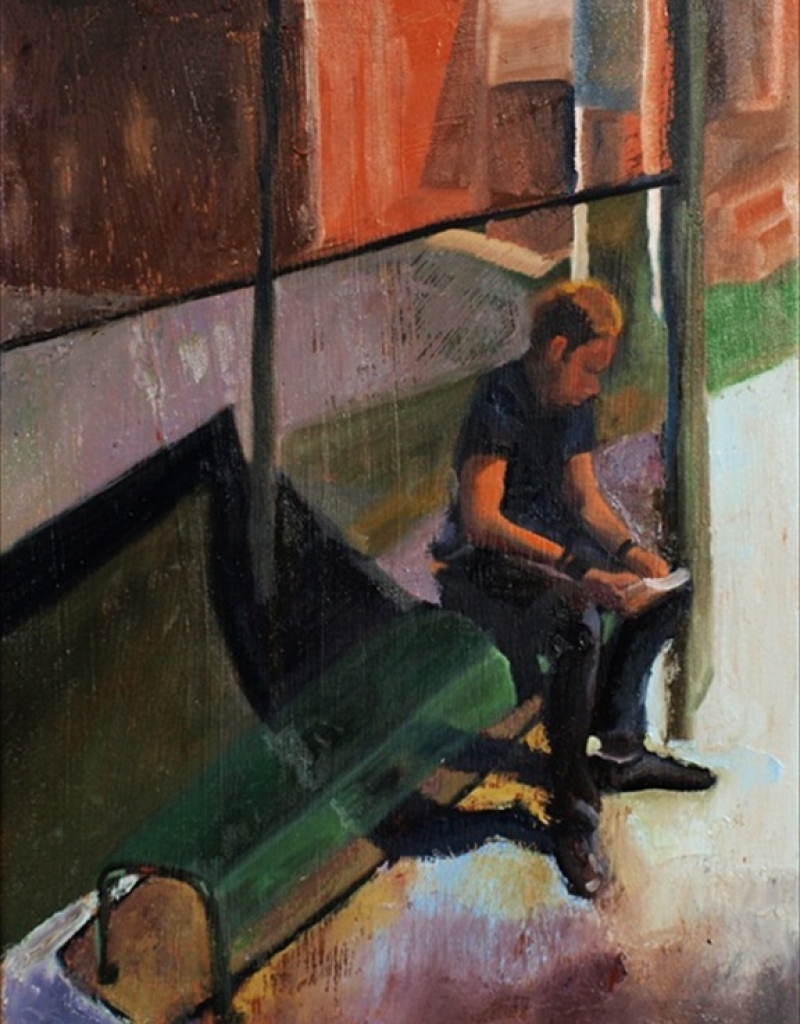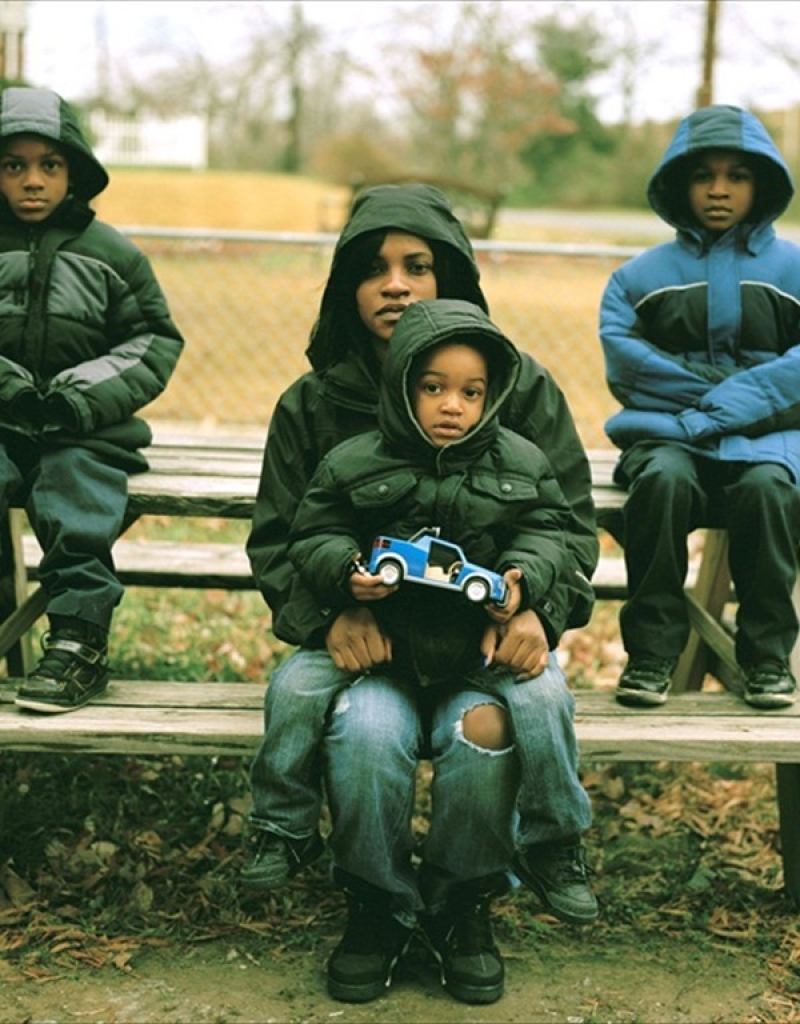 Exhibitions
Exhibitions
To Be Black in White America- About the Artists
To Be Black in White America- About the Artists
Larry Cook is a finalist for the 11th annual Janet & Walter Sondheim Artscape Prize. He uses “photography, video, installation and text [to] examine identity, history and cultural symbolism.” His work challenges the notion of a ‘post-racial’ society. He takes a critical look at the “complex conditions of Black Americans.” The videos in this exhibition specifically examines Dr. Martin Luther King Jr.’s vision of an integrated US, as expressed by his “I Have a Dream” speech and how far we have drifted from that vision.
Wesley Clark often focuses on the experience of young, Black males in America and the African Diaspora. His repeated use of targets in his art expresses the target that young, Black men feel is on them—asking them to behave a certain way, expecting them to fail and punishing them when they do. The works in his Open Season series are titled with the initials and age, date and state of death in, what Clark calls, “excessive response” incidents. Beginning with Trayvon Martin, Clark is tracking the Black men and women killed by police and other White “authorities.” While his subject matter is somber, the colorful tapestry created by Clark’s targets expresses the beauty of the people lost to such violence.
Linda Day Clark “is a community advocate working for change as an artist, educator and scholar.” Day Clark’s photograph North Avenue No. 24, from 1993, shows the then and continuing prevalence of and preference for the classic, White, blonde Barbie® doll. In Day Clark’s photograph, a young, Black girl smiles ear-to-ear as she shows off a doll in clothes and hairstyling that she has made herself. Earlier this year—over 20 years after Day Clark took her photograph on nearby North Avenue—Mattel® toys released Barbie® dolls with more varied appearances but whether they will take root with similarly diverse girls is yet to be determined.
Oletha DeVane is an accomplished multimedia artist who works in painting, printmaking, sculpture and video, often combining these elements in installations. Her influences include her faith, Greek mythology, Yoruba religion and biblical references. In this exhibition, she explores the ordeal of Henry “Box” Brown, the man who mailed himself to freedom in over a decade before the American Civil War.
Following the shooting of Trayvon Martin in 2012, the slain teenager’s grey hoodie became an icon for racial profiling and wrongful death. Nehemiah Dixon III continues this conversation in his Suit of Armor series. He dipped hoodies in black epoxy resin and allowed them to cure so that they appear to contain a body. They are solid but ghostly. Their color assumes skin tone. They look like they should be protective, but we know that they are not. They look like they are being worn by a body, but that person is gone. Dixon’s hoodies are symbols of strife, loss, grief and mourning.
In 1997, Susan Goldman, a printmaker, began a series of work featuring the ‘Hottentot Venus.’ Saartjie “Sarah” Baartman, a Khoikhoi woman from South Africa spent her adulthood displayed as a spectacle in 19th century human zoos. Even after her death, parts of her body were on display at the Musée de l’Homme in Paris until the 1970s. Her body was finally returned to South Africa and laid to rest in 2002. Although Baartman never came to the US, she is emblematic of the exploitation of the Black [especially female] body in both human zoos and modern media.
All of Curlee Holton’s prints featured in this exhibition were made in the early 1990s, but are so relevant to today’s racial climate that they could have been pulled, hot off the press yesterday. Man Man Meaning 1 and 2 speak to a shared belief in Christianity, but very different interpretations between White Supremacists and African Americans. Shoot’em Up provides images of Black-on-Black violence, but the red tip of the gun reminds us of the toy that 12-year-old Tamir Rice was shot and killed by the Cleveland Police for carrying in a park. Promise reminds us of the numerous young men, with big dreams for the future, who have been taken by gun or, specifically, police violence.
Wayson R. Jones is a multimedia painter of highly abstracted, very tactile and largely black-and-white portraits. Jones “is influenced by the sense of gesture, space and spontaneity in Abstract Expressionism.” The portraits are not literal, but combine “image, memory and emotion” through planned and chanced processes of painting. He captures the essence of people: the martyred status of murdered by police; the bars seared onto the image of non-violent prisoners incarcerated in the War on Drugs; the families, friends and communities crying out for justice; the weight of the expectations on this country’s first Black president.
Jeffrey Kent is a mixed media artist who works primarily in painting but also creates exquisite sculptural works. His “recent artworks reflect critically on the way mass media is used to convey social agenda.” He ranges in imagery from the Civil Rights Movement to contemporary media representations of African-American boys and men as ‘punks.’ His frequent use of backwards text forces the viewer to experience the “disenfranchisement, separation and humiliation” of those who have trouble with words on a daily basis.
Wendel Patrick is a photographer and musician who works with ambient sound. He collaborates with WYPR’s Aaron Henkin on the “Out of the Blocks” series, which—originally aired as one hour of radio—focuses on one Baltimore block at a time through recordings, interviews, photography and video. Patrick’s photography in this exhibition highlights Baltimore’s youth culture, last year’s racially-charged protests and definitions of masculinity.
Jamea Richmond-Edwards is well known for her images of women, elevated by halos in collage and drawing. In recent years, she has also begun working on extremely subtle, black-on-black drawings, occasionally highlighted with white conté crayon. Despite the subtlety of her technique, Richmond-Edwards creates powerful images, such as Guns, Bubbles and Black Power, which is a vision of powerful, Black, female autonomy.
Stephen Towns highlights the cliché of a ‘post-racial’ America by responding to issues within African-American culture. In this exhibition, his painting I Wish It Were That Easy celebrates African-Americans’ ability to vote but recognizes that “changes in leadership and policy can be slow.” During this election season, many people still find themselves disenfranchised or meeting resistance in exercising their right to vote. Seeing these experiences, Towns seeks to “create beauty from the hardships in life.”
